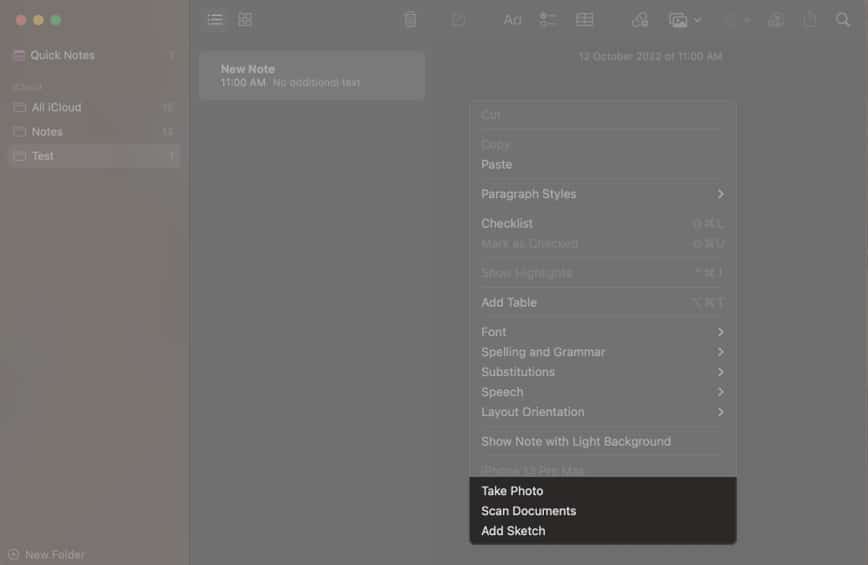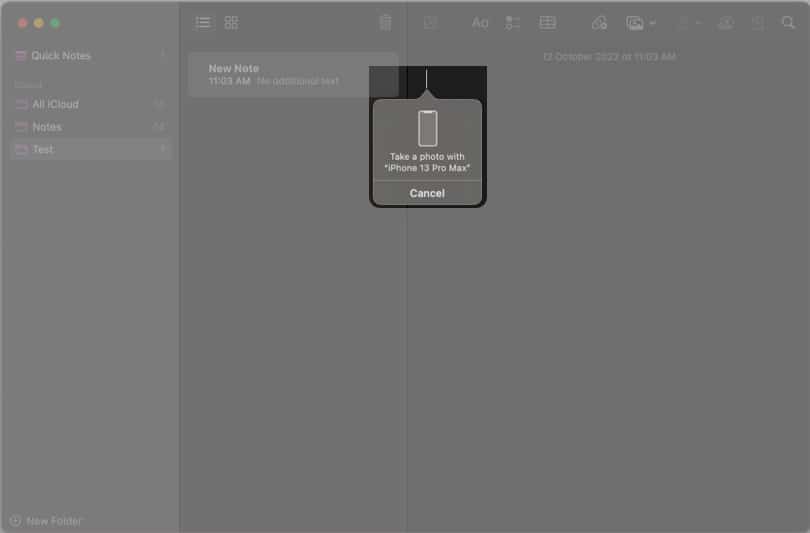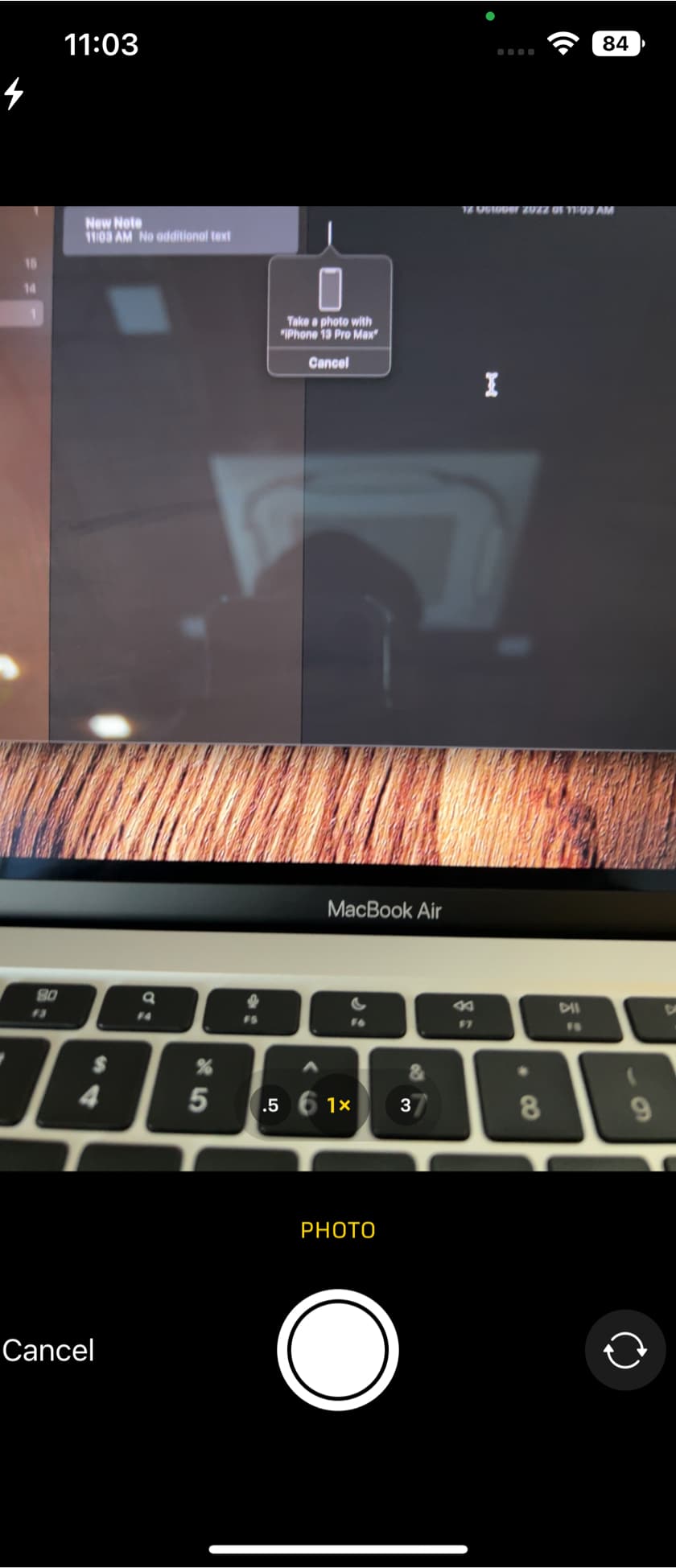How to use Continuity Camera on Mac to take photos, sketch, or scanHow to use your iPhone as a Mac webcam
How to use Continuity Camera on Mac to take photos, sketch, or scan
I’m certain you’ve heard high praise about how seamless Apple’s ecosystem is. The Continuity Camera is yet another feature that contributes to this well-deserved fame. Before proceeding, let’s take a look at the requirements for the feature and the apps that support it.
Requirements to use Continuity Camera
Devices should be near each other. Mac and iPhone or iPad should be connected to Wi-Fi, and Bluetooth should be enabled. Both devices should be using the same Apple ID with two-factor authentication enabled. A Mac device running on macOS Mojave or above. An iPhone or iPad running on iOS 12 or iPadOS 12 and above, respectively.
Apps that support Continuity Camera to take photos, sketch or scan documents
Finder Keynote 8.2 or later Mail Messages Notes Numbers 5.2 or later Pages 7.2 or later TextEdit
Take photos, sketch, or scan documents with Continuity Camera
The steps to click images, create and add sketches or scan documents are the same. Apart from the supported apps, you can also insert images or scan documents on the desktop. Here’s how: As mentioned earlier, you can also do the same on the desktop. The process is familiar.
How to use your iPhone as a Mac webcam
The cameras on the MacBooks and iMacs are nothing to write home about, and the video quality is just mediocre. On the contrary, the iPhone features an excellent set of cameras. To utilize the hardware capabilities of the iPhones fully, Apple has introduced a new feature in Continuity Camera that allows you to use your iPhone as a webcam. This feature was recently introduced with Apple’s recent software updates, wiz., iOS 16, and macOS Ventura. It is a minor change capable of making a huge difference in day-to-day usage. Read along to know the requirements, supported apps, and all you can do while using your iPhone’s camera as a webcam.
Requirements to use an iPhone as a webcam in macOS Ventura
A Mac device updated to macOS Ventura. An iPhone updated to iOS 16 (iPhone 8 and above). Both Mac and iPhone should be logged in with the same Apple ID. Bluetooth and Wi-Fi should be enabled on both devices. Only iPhone 11 and above support Desk View and Centre Stage features. Only iPhone 12 and above support the Studio Light feature.
How to turn on Continuity Camera webcam on iPhone
While the Continuity Camera is enabled by default in iOS 16, it’s wiser to check the setting for a seamless experience. Now, your iPhone is ready to function as a webcam for your Mac. It can capture video as well as audio. So you get an upgrade in terms of video quality and improved audio input thanks to microphones on your iPhone. However, only the rear camera can be used as a webcam. Also, keep your iPhone near your Mac so it is within range. Now, you can use the Continuity Camera feature within apps downloaded on your Mac or video calling/conferencing websites. We have listed step-by-step guides for both methods.
Use Continuity Camera in any video calling app on Mac
You can use Continuity Camera with any app that supports video calling on your Mac; FaceTime, Zoom, Skype, etc., are some examples. We have used FaceTime as an example. There is a chance that the exact titles might differ in the Menu Bar, but the steps below should give you a rough idea of how to navigate your way around enabling Continuity Camera. You can view the difference in image quality between the Mac’s 720p camera and the iPhone’s camera in the images above.
Use Continuity Camera on video conferencing websites
As of writing this article, the feature works flawlessly on Safari and Chrome web browsers, and we expect it to support most web browsers. Do note that you cannot use your iPhone when it’s being used as a webcam. If you want to stop using your iPhone as a webcam, tap Disconnect on your iPhone. It’ll automatically be locked, and the screen will display a message similar to “Connected to iGB’s MacBook Pro.” You also have the option to Pause using your iPhone as the camera.
How to use Portrait Mode, Centre Stage, Studio Light, and Desk View on Mac
Apple has done a great job at utilizing the iPhone’s camera hardware. One of the benefits of using your iPhone as a webcam is you get access to several features that wouldn’t have been available otherwise. Portrait mode, Centre Stage, Studio Light, and the newly introduced Desk View are the available features, and here’s what they offer:
Portrait Mode: The camera focuses on the subject (the person attending the call) and applies a bokeh (blur) to the background of the video. It functions similarly to Cinematic Mode found while recording videos on the iPhone. Centre Stage: It uses machine learning and adjusts the ultrawide lens on the iPhone to track your movements. If you move from one side to another, this feature helps keep you in the center of the frame. Suppose more people enter the frame while on a call; the lens will zoom out and adjust to accommodate the extra people.Studio Light: It brightens up the subject and darkens the background. Desk View: The implementation of Desk View feels like some sort of sorcery by Apple. It uses machine learning and the ultrawide sensor on the iPhone to capture your desk video. Only iPhone 11 and above with ultrawide lens support this feature. So, iPhone SE 2nd and 3rd generations do not support this feature.
With all that said, here’s how you can use these features.
How to manage video effects in Continuity Camera
Note: You will need to mount your iPhone on your MacBook to use the Desk View feature. Wrapping up… If you use an iMac or a MacBook, the Continuity Camera feature helps you upgrade the video quality of video calls, conferences, etc. But it’s most useful for people using a Mac mini, Mac Studio, or other Mac devices that do not have a built-in camera. Have you used Continuity Camera? And, if you have, what are your thoughts on the video quality and the overall implementation of the software? Let me know your thoughts in the comments below. Read more:
14 Finder tips and tricks every Mac user must know.How to use iCloud Shared Photo Library on iPhone, iPad, and Mac.10 Tips to fix MacBook overheating issue.How to fix “Charging On Hold” warning on iPhone









